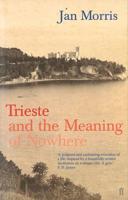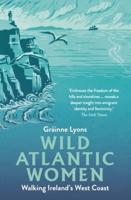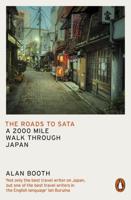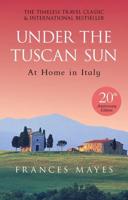Publisher's Synopsis
Your Adventure on the Portuguese Way to Santiago Starts Here!
This guidebook, compiled by a team of experienced trekkers and pilgrims who have walked the various routes to Santiago de Compostela many times, is designed to accompany you at all times as a true travelling companion, giving you all the information you need for a safe, fulfilling and emotion-filled experience.
Three routes, 37 stages, 610 miles of trails and more than 180 selected accommodations in a reliable and detailed guidebook. Discover the stages, unmissable places, maps, booking contacts with up-to-date prices and practical advice to make the most of your unforgettable adventure!
Whether you are an experienced pilgrim or a beginner, the Camino Portugués is an unforgettable experience that will leave you with indelible memories.
The Portuguese Way is the ideal choice for those who love the light and beauty of the Portuguese and Spanish Atlantic coasts, together with the welcoming and hospitable atmosphere of the typical villages and towns crossed. It is also the most popular route immediately after the French one, compared to which, it can also offer advantages as it is practicable all year round, given the mild temperatures in Portugal, it is never too crowded and it has accommodation and services always available, so it is very easy to organise, it does not have steep gradients to overcome nor rough paths like those that can be encountered in some sections of the French Way, its environment, nature and landscapes are spectacular and it is one of the greenest routes leading to Santiago. Finally, the excellent cuisine that can be found in almost all accommodation facilities is also worth considering.
Along the way, pilgrims can visit ancient churches, monasteries, castles and museums, and it will be really easy to meet people from all over the world and make lasting friends.
Depending on the starting point of the pilgrims, there were various routes to Santiago, but today three main routes can be identified.
*The oldest is the northern Portuguese Way, which starts at the cathedral in Porto and continues via Rates, Barcelos, Ponte de Lima and Valença, before entering Spain.
Another variant was the Camino de Geira, the ancient Roman road through the area of Gerês to Portela do Homem.
*And there is also the Portuguese Way of the Coast, which today is well signposted and very busy, and which, always starting from Porto, continues to Vila do Conde, Esposende, Viana do Castelo and Caminha, where one can pass into Spain or continue to Valença.
*More to the south is the great Portuguese Central Route, which coincides with the Tagus Route in Fátima as far as Santarém.
Both start at Lisbon Cathedral and continue along the Tagus River, passing through Alverca, Vila Franca de Xira, Azambuja, Santarém, Golegã and Tomar, and from there continue to Coimbra, passing through Alvaiázere, Ansião and Rabaçal.
Continuing northwards, the route continues via Mealhada, Águeda, Albergaria-a-Velha, São João da Madeira, Grijó, until reaching Porto, where the northern routes begin.
The total distance from Lisbon to Santiago de Compostela is 385 mi, which on average can be covered in just under a month, for pilgrims who decide to go on foot.
Traditionally Lisbon is the official start of the Portuguese Way to Santiago de Compostela, but many choose other points from which to depart, such as Santarem, Coimbra, Oporto or Braga.
Another popular starting point for those who only have a few days at their disposal is the town of Tui, already on Spanish territory.










